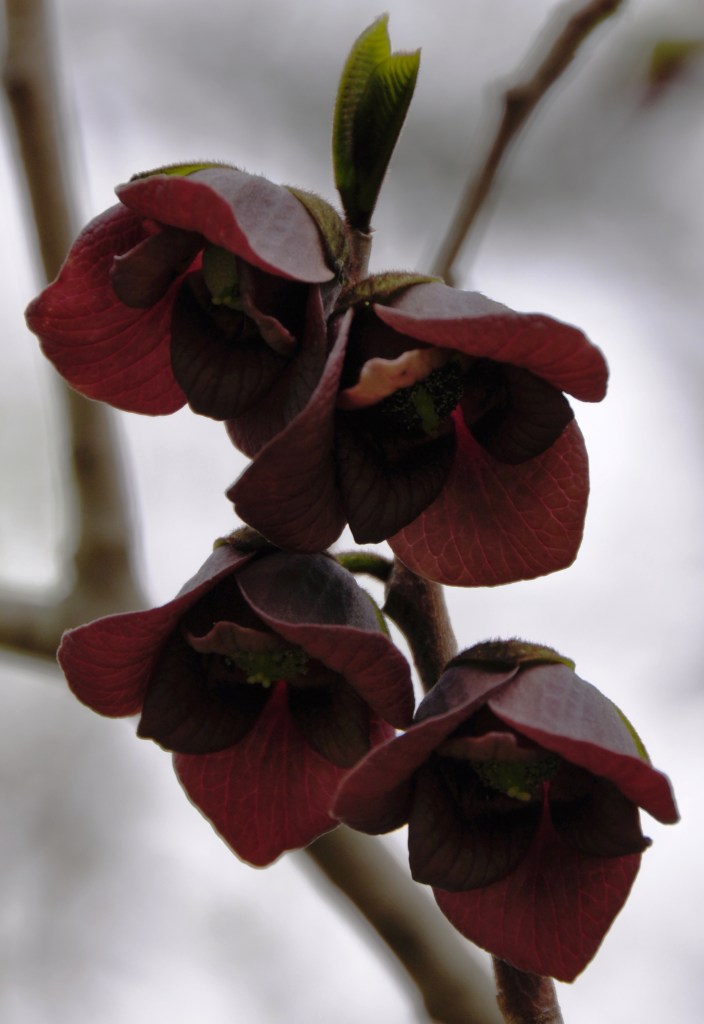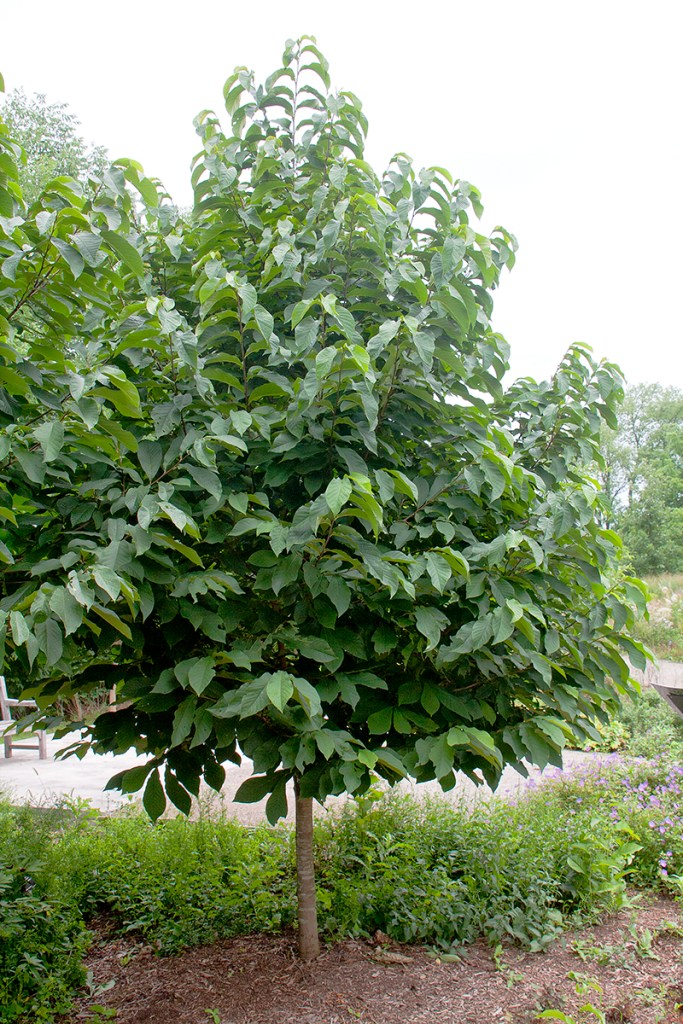Scientific name: Asimina triloba
Family: Annonaceae (Custard apple family)
The common pawpaw is an understory species that grows in thickets of wooded ravines, bottoms of bluffs, and low areas of wooded streams. They grow at a moderate rate and require deep fertile soil that is moist, but well-drained and slightly acidic (pH 5-7). Pawpaws are Ohio’s only native fruit tree! Their fruits have a soft, custard-like texture and their subtle flavor is often described as tasting of a blend of both a mango and banana.
Identification

LEAF: Pawpaw leaves are alternate and simple in pattern. These dark green leaves are of an oblong shape with pointed or curled tips.

TWIGS AND BUDS: Twigs consist of small alternating dark-brown buds, complete with a round terminal bud (pointed at the tip).

FLOWER: Pawpaw flowers bloom from March through May. Each branch bears few, but large, blossoms. These blooms droop downwards and are deep red in color.

FRUIT OR SEED: Common pawpaws produce small, dense green fruits. Their fruit is only good for eating once it is ripe enough to naturally drop from the tree, or be easily plucked from a branch. Pawpaw fruits bruise very easily, making them nearly impossible to transport commercially.

BARK/SHAPE: The bark is light gray and smooth in texture. As they mature, pawpaws develop a narrowly pyramidal shape with dense, drooping foliage. In the shade, they grow tall with more open branching, horizontally positioned leaves, and fewer low limbs.
MATURE HEIGHT: 15-20 feet.
Information credits: Iowa State Extension
Photo credits: MNCPPC, Richard Orr, Jennifer Schlick, David Dietlein

